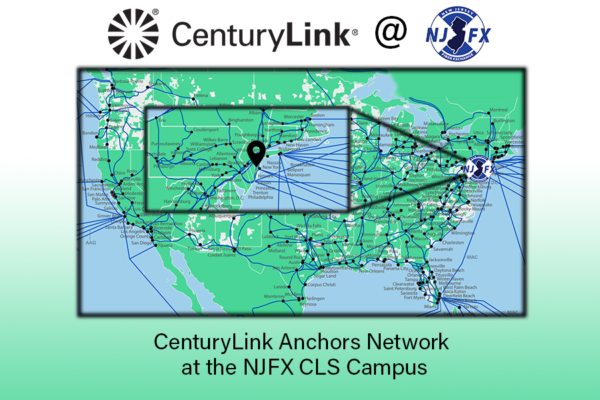Gold Data Announces New PoP at NJFX Strengthening Connectivity and Diversity
Gold Data Announces New PoP at NJFX Strengthening Connectivity and Diversity
Pay-As-You-Go Model Paves the Way for LATAM Interconnectivity

Sunrise, Florida and Wall Township, NJ – Gold Data, a leading Latin America network provider, is proud to announce opening a strategic point of presence (PoP) at NJFX, the carrier-neutral Cable Landing Station (CLS) colocation campus in Wall, New Jersey. NJFX offers customers on-demand access to redundant subsea cable infrastructure across the Atlantic to both Europe and Latin America. The partnership allows Gold Data to provide customers with a fully diverse global solution through NJFX’s ecosystem of network operators and subsea cable systems.
Gold Data relies on more than 156. strategic points of presence, diverse submarine capacity over 15 systems, technology development and our own award-winning network to offer complete end-to-end solutions to and from Latin America and the Caribbean, with dedicated service for multinational companies, global carriers, OTTs, and Hyperscalers.
In addition, Gold Data has announced Gold Data 1 Submarine Cable; the first cable to land in Mexico in 22 years. This new US-Mexico digital highway will offer the bandwidth capacity and the quality of services required by the market and will play a key part in empowering the fast-growing Data demand in Mexico City and Queretaro. Customers will soon have a new US-Mexico digital freeway that offers advanced services on the next-generation subsea infrastructure with the best latency. Our new PoP at NJFX gratifies customer solutions seeking diversity from overly dense infrastructure across the East Coast.
“We are looking forward to this new connection to the ecosystem of NJFX, to offer a better connection to the Latin American market,” Renato Tradardi, CEO at Gold Data Group.
Gold Data’s new presence at NJFX will provide NJFX’s customers with direct access to the new submarine network consisting of 10-fiber pair cable system that offers more than 250 TBPS of capacity with Geomesh Technology offering 100% underground terrestrial paths up to Queretaro, the main market of data of Mexico, also the connections with our backbone to all Latin American and the Caribbean. By joining the NJFX interconnection community, Gold Data and its customers gain direct, on-demand interconnection with Havfrue/AEC-2, Seabras-1, TGN1, and TGN2 and are able to leverage direct, low latency routes to major US business hubs avoiding legacy chokepoints.
“We are excited to have Gold Data’s award-winning network available at NJFX with its full array of services providing end-to-end solutions throughout Latin America and the Caribbean,” Felix Seda, General Manager at NJFX.
NJFX enables enterprise, content, media, government, and communications providers can take advantage of redundancy, decreased latency, and high-quality connectivity with fewer global points of failure thanks to NJFX. Through a physical presence and access to the Meet-Me-Room (MMR) within its Tier-3 CLS campus, NJFX ensures that each carrier network interconnection is designed and maintained with reliable architectural diversity. NJFX is home to some of the biggest and most cutting-edge companies in global networking.
###
About Gold Data
Gold Data is a multinational information technology company which focuses on telecommunications infrastructure, we provide direct connectivity through the Americas and the Caribbean, interconnecting more than 156 PoPs, 76 data centers with a presence in 35 countries of Latin America. www.golddata.net
About NJFX:
NJFX is a Tier 3 Carrier Neutral Cable Landing Station campus. Our colocation ecosystem has expanded to over 35 network operators offering flexibility, reliability, and security. Our Wall, NJ location provides direct access to multiple subsea cable systems giving our carriers diverse connectivity solutions and offers direct interconnection without recurring cross-connect fees. For NJFX media inquiries, please contact: [email protected]
More In the News

“Every Submarine Cable Project Is Unique”
“Every Submarine Cable Project Is Unique” An interview with Michael Cunningham, CEO of Crosslake Fibre Originally posted 23 June 2020 on SubCableWorld.com. June 29, 2020 WALL

CenturyLink arrives at NJFX cable landing station colocation campus
CenturyLink arrives at NJFX cable landing station colocation campus The connection into NJFX, which offers access to four submarine cable systems and seven independent U.S.

CenturyLink Anchors Network at NJFX Cable Landing Station Colocation Campus
CenturyLink Anchors Network at NJFX Cable Landing Station Colocation Campus June 15, 2020 Wall Township, NJ – NJFX, the only Cable Landing Station (CLS) co-location

In the Eye of the Storm: Planning for the necessary shift of global networks
In the Eye of the Storm: Planning for the necessary shift of global networks As we realize connecting virtually is crucial to our current reality,

NetIX Selects Industry-Leading and Strategically-Located NJFX Data Centre as its Newest East Coast Partner
NetIX has expanded and improved its reach by adding NJFX data centre to its global network Sofia, Bulgaria – 18th May 2020: NetIX, the

NJFX Welcomes A Top Five Global Network, Cogent Communications, to Its Cable Landing Station Campus
NJFX Welcomes A Top Five Global Network, Cogent Communications, to Its Cable Landing Station Campus Expanding Its Global Ecosystem and Bringing the World Closer Together
Gold Data Announces New PoP at NJFX Strengthening Connectivity and Diversity Read More »

































